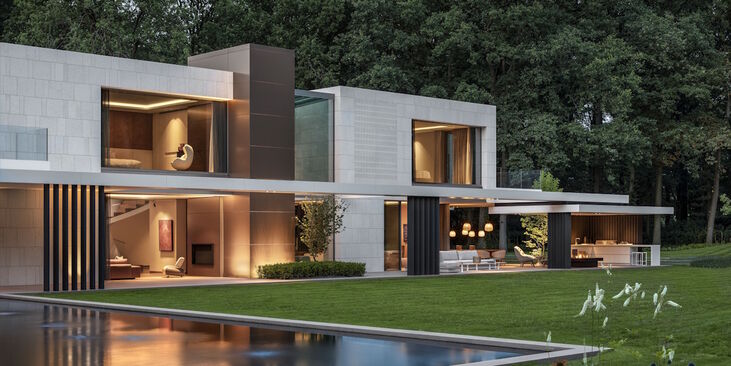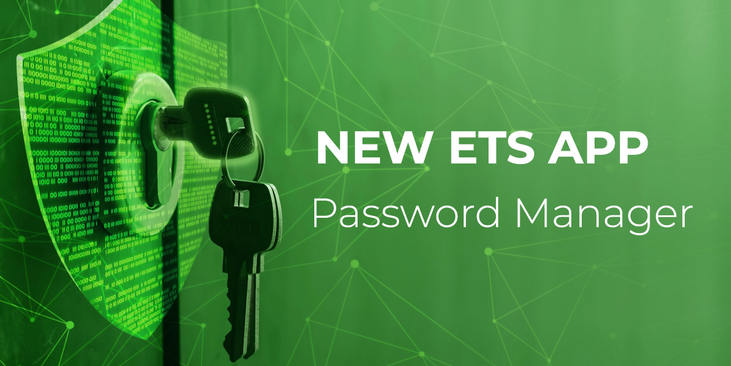14. Sep 2021
Smart homes, Buildings and Cities: there can be no energy transition without KNX

Yasmin Hashmi provides highlights from the 'Smart Energy Management with KNX' panel discussion at the recent Smart Energy Summit, which discusses the importance of KNX in the transition from fossil fuel to zero carbon.
Managing energy flows in a building has been an area of interest for KNX since its inception. It soon expanded its focus beyond the boundaries of a single house or building to how energy can be managed within a neighbourhood or even an entire city. This was demonstrated as long ago as 2012 at the Light+Building show, where the KNX Association presented the 'KNX City', showing how the concept of a smart city could be tackled using existing KNX products.
Nine years later, with climate change at the top of the agenda, the concept of the smart city and the transition from fossil fuel to zero carbon have never been more relevant. So what role has KNX to play, and how do we move forward?
In the 'Smart Energy Management with KNX' panel discussion during the recent KNX Smart Energy Summit online event, four industry experts discussed how KNX is already being used to manage the digitalisation of the energy transition, and what needs to be done to ensure further progress.
Optimising household energy consumption
Ideally, the way to optimising household energy consumption is by providing cross-sectoral management between electricity, heat supply and e-mobility through the coordinated use of generation, consumption and storage resources in a household. Jürgen Leppig, Chairman of the German federal association of independent energy consultants, GIH Bundesverband e.V., points out that although heat pumps usually communicate via the Modbus protocol, this is not a problem, as there are gateways available that convert Modbus to KNX. This means that the heat pump can now be controlled via the KNX HEMS (Home Energy Management System). Furthermore, in 2020, battery storage solutions provider, sonnen GmbH, joined the KNX Association, so now the HEMS has the possibility of controlling energy consumption (including EV charging points) according to battery storage in order to perform dynamic load management and optimise consumption. Furthermore, Leppig maintains that consumption optimisation need not end within the boundaries of the building, stating that "KNX is suitable for sector interconnection - opening up completely new territories for us!"
E-mobility
According to Helmut Haßenpflug, Managing Director of systems integration company, IGT GmbH, whilst there were already discussions about sector interconnection and the electrification of mobility in 2012, at that time, the number of electric cars in the whole of Germany was a mere 4500 units. He notes, "By the end of 2020, there were already 350,000 electric cars on our roads and by the end of this year, that is expected to reach 1.1 million. Whatever the figure, it is now getting to a level where it starts to become interesting. Sector interconnection, including e-mobility and wallboxes [wall-mounted charging stations that are faster than conventional sockets], must first be managed, but we can make that happen with the products we already have."
Haßenpflug points out that the challenge for KNX is to be able to charge electric cars in the smart home and integrate them into the energy management system. The car needs to know what the house is doing and vice versa, and the data for this comes via the KNX backbone. KNX takes on the role of the conductor in the energy concert and harmonises the processes between up to five chargers of different types and manufacturers, the PV system with associated inverter, the battery storage and the consumers in the smart home. Haßenpflug adds, "The fact that this is already possible without the domestic fuse blowing shows how well KNX performs in this environment, which is now picking up speed significantly".
Educating the electrical trade and the public on the benefits of KNX
Whilst the benefits of KNX are obvious and well-understood by those in the business, there is still a lot of education to be done. For example, as widespread as KNX may be today - in Germany for example, the share of KNX in smart homes and commercial buildings is 56% - the system is still far from being a no-brainer. The smart home landscape is still too fragmented and there are many competing and overlapping systems. As Hermann Schmidt, Managing Director of KNX systems integration company, HSc Informatik, notes, "My experience is that customers need to be convinced about KNX because they are overwhelmed by the variety and complexity of the offers on the market."
As KNX is an open, worldwide standard with which over 500 manufacturers comply, it should be an easy sell, especially since you can mix and match products from different manufacturers and they will work seamlessly together. That affords the customer future-proof protection and means that they are not hostage to any one supplier. As Schmidt notes, "Since 2009 I have seen many a system disappear into oblivion - proprietary solutions tend to do this." Which is why he initially chose KNX for his own home, precisely because it is not a proprietary system.
KNX has the added benefits of constantly evolving yet remaining backwardly compatible, exemplified by a CHP (Combined Heat and Power) project Schmidt has been involved in since 2012. A company had decided to purchase a CHP unit (40kW thermal output, 15kW electrical output) to keep on standby because the supply via the grid was very unstable. A gas boiler also gets switched on as required. In addition, secondary buildings 150m away were integrated. Now, the energy management system is being expanded to include an existing PV system and a 70kW lithium-ion battery storage system.
"They all have to communicate with each other, but KNX interfaces are rare in these sectors, whereas Modbus is more prevalent," says Schmidt. Nevertheless, he was able to solve the problem relatively easily because there are now many gateways that convert various control protocols to KNX. In this specific example, he used the EibPC? from Enertex Bayern. But what this example shows above all is that since 2012, the energy management system has been in operation and continues to be expanded, all thanks to the flexibility and on-going development of KNX.
Security and robustness
Another advantage of KNX, according to Schmidt is that "a KNX system can be set up not only as an open system, but also as a closed system. That is an important aspect in terms of security. For example, what happens if the Internet should fail? With KNX, whatever happens, the smart home will not cease to function but continues to work undisturbed." This is due to the fact that KNX uses intelligence that is distributed across the system, rather than centrally-located or outsourced to the cloud, so there is no central point of failure that can bring the system down. Whichever device might fail, everything else continues to work. KNX also offers powerful cyber security through KNX Secure technology.
Installers
Yet another benefit of KNX is the growing number of certified installers worldwide, which, Bernd Zeilmann, Head of the Bayreuth Guild for Electrical Engineering and Information Technology, argues is key and means that customers are not left stranded should their installer no longer be available. He stresses, "The more tradespeople that are skilled in KNX the better, so that any company can immediately pick up where another has left off. So it's important that we get into the vocational schools!"
Ultimately it will be the electrical trade that has to implement home and building automation and set up the energy management systems on site. "Energy consumption has to be reduced by 50 percent by 2050", says Zeilmann, "but the electrical trade is not involved enough and many companies don't know this field well. We can only meet the target with young skilled workers." That's why, in Germany, the new profession of 'Electronics technician for building systems integration' was created. But as Zeilmann warns, "My concern is that we barely manage to meet the demand that will arise in the near future for new training."
A seat at the table
Zeilmann is also concerned that the electrical trade is facing completely new demands. Anticipatory energy control is the goal, "So we have to take into account self-generation and self-consumption, monitor the state of the grid to reduce grid costs, take into account the electricity market because there will soon be flexible electricity prices, and plan the entire process 96 hours in advance. At the end of the day, we must rely on the trades to implement all of this in an economically-attractive way." Another point that Hermann Schmidt is keen to make is that KNX professionals need to be at the table when technical regulations are drawn up concerning sector interconnection such as e-mobility and grid integration.
KNX and the energy transition
How do the functions of existing KNX systems and the products of KNX Members measure up to the challenges of successfully implementing the energy transition? According to Zeilmann, the fact that KNX is independent and already widely used is a good starting point. Hermann Schmidt adds, "KNX must create intelligent interfaces that everyone understands - something comprehensive, like KNX IoT." Bernd Zeilmann sees it the same way, "In order to achieve that, more intelligence has to go into the systems." Building on this, he would like to see fewer device types in future, for example by integrating actuators and sensors.
According to Helmut Haßenpflug, KNX is equipped to play an important role in the transition. "All of the necessary products are available, and we can use them with existing home energy management systems, which already works well in smart homes. However, there is still work to be done with respect to heaters and ventilation. Too few providers currently equip their devices with intelligent interfaces or do not even want to disclose the interfaces - especially in the higher performance ranges."
Conclusion
Thanks to the resourcefulness and innovative spirit of the 500+ KNX members in around 50 countries, who now offer a wide range of different KNX devices, almost every problem can be solved and every automation wish fulfilled.
The variety of KNX devices that can now be used in the IoT environment means that KNX already meets the requirements to be able to realise sector interconnection and load shifting. In particular, charging points for electric cars can be integrated into smart homes and smart buildings - an important aspect of successful energy transition.
The technical advantages of KNX are clear, but it is also important to bring end users with us. As Jürgen Leppig suggests, "The entire topic of home automation needs to be brought to the attention of the general public. This is not about the technical discussions in detail. End users should not even notice the complex technology behind it - it only works if we can offer convincing solutions." The smart meter gateways that now have to be introduced offer new opportunities for this - the combination of smart metering and smart home could achieve the final breakthrough. But this would require more standardised solutions instead of proprietary ones. With demand for energy efficiency growing, KNX can play a major role not only in the home or building, but throughout neighbourhoods and cities. Bernd Zeilmann puts it more strongly, "Sector interconnection, the energy transition and climate protection are not possible without KNX."
Highlights
-
 News
NewsThe KNX Journal 2025 is now available
The latest edition of our annual smart home and building solutions magazine has arrived. The KNX Journal 2025 offers ... -
 News
NewsNew ETS App: Password Manager
The ETS Password Manager is a powerful new ETS App introduced in ETS 6.3 that eliminates the need to repeatedly enter ... -

